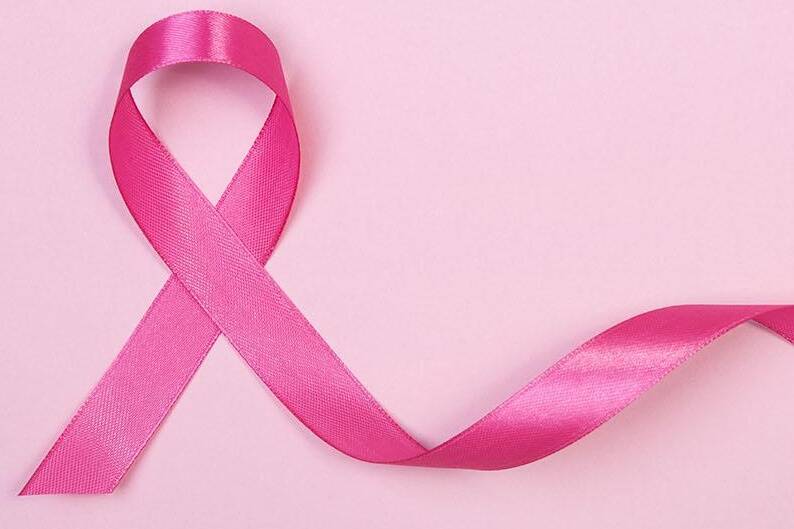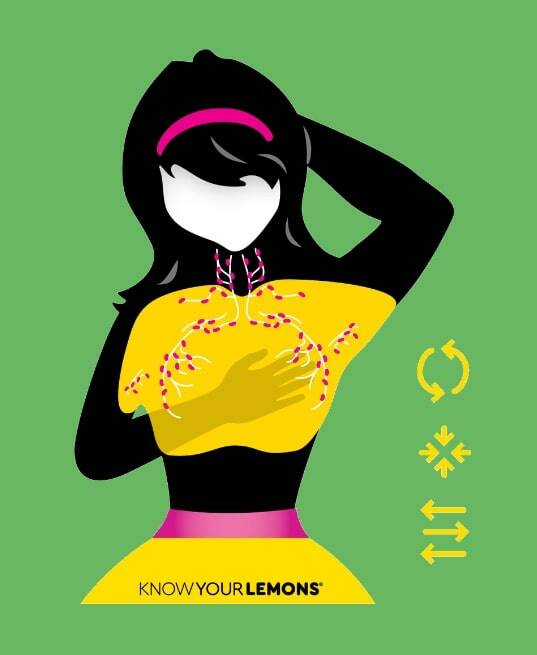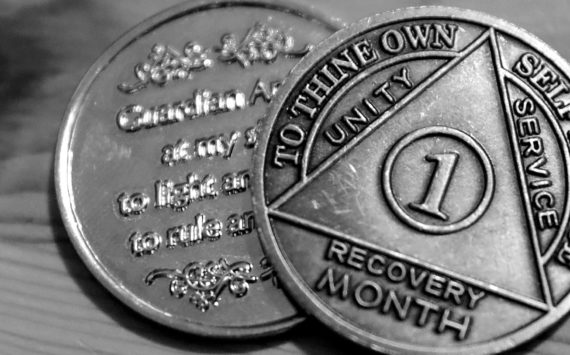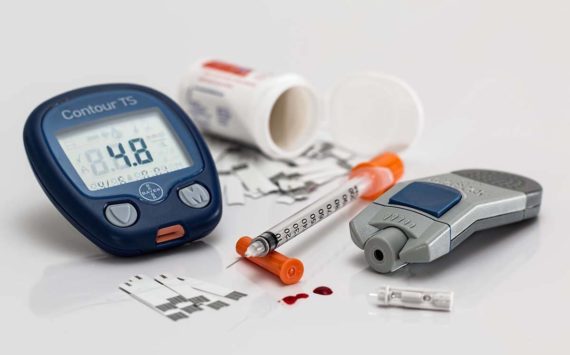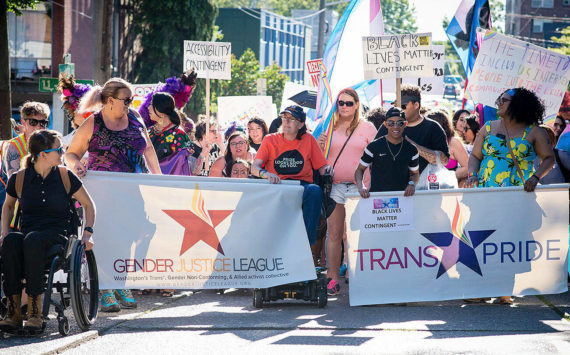While looking towards the excitement of candy and costumes this Halloween, October is also a time to pull out the pink for Breast Cancer Awareness Month. While women who are 40 years old have the option to begin an annual breast cancer screening with mammograms, familiarizing oneself with their lemons–regardless of age–can assist with early detection if breast cancer occurs.
“Breast cancer is fairly common. About 1 in 8 women are going to be diagnosed with breast cancer at some point in their lives,” said Marianne Vivien, a genetic counselor at Overlake Medical Center & Clinics.
According to Vivien about 5-10% of cancer cases are due to genetic mutations or hereditary conditions, while over 90% of cancer cases are random, sporadic, and are usually due to age, and environmental and lifestyle factors.
“We all have cancer genes and their job is to protect us from cancer generally, but if someone is born with a mutation or inherits that mutation from a parent, all that really means is there’s a change in the DNA,” said Vivien.
The change in the DNA causes the gene to no longer function properly, and when this happens to a cancer gene, tumors develop more easily and at earlier ages. BRCA 1 and BRCA 2 are the most common breast cancer genes that are also associated with ovarian cancer, pancreatic cancer, melanoma and prostate cancer, said Vivien.
The general population risk for female breast cancer over a lifetime is 12%, according to Vivien, which increases to greater than 60% with BRCA mutations.
“Male breast cancer is pretty rare in the general population. I believe it’s roughly a half a percent chance over a lifetime for someone who was born male to develop breast cancer,” said Vivien, who said that risk increases to about 7% over a lifetime with BRCA mutations.
Vivien expressed that if an individual has any breast tissue, regardless of gender, it’s important to screen for breast cancer.
“We definitely have that conversation with our patients who are Trans[gender],” said Vivien. “Depending on what surgeries they may or may not have had already, we would discuss essentially what screening or management would be recommended based on the particular gene that we’re concerned with and what other cancers are associated with that gene.”
A breakdown of breast cancer rates on the Eastside
The Washington State Cancer Registry collects incidence data for numerous types of cancer across the state, including female breast cancer. Incidence rates are per 100,000 and the registry data for female breast cancer from 2014-2018 include:
- Mercer Island/ Point Cities had an incidence rate of 149.9 which translates to 171 cases.
- Bellevue-South had an incidence rate of 147.0 which translates to 155 cases.
- Bellevue-Central had an incidence rate of 154.1 or 158 cases.
- Bellevue-Northeast had an incidence rate of 151.7 or 163 cases.
- Bellevue-West had an incidence rate of 149.0 or 152 cases.
- Redmond had an incidence rate of 151.1 or 214 cases.
- Kirkland had an incidence rate of 167.3 which translates to 245 cases.
- Kirkland-North had an incidence rate of 151.8 or 153 cases.
- Bothell/Woodinville had an incidence rate of 161.1 or 167 cases.
- Kenmore/Lake Forest Park had an incidence rate of 146.5 or 172 cases.
- Issaquah had an incidence rate of 156.3 or 154 cases.
- Sammamish had an incidence rate of 167.8 or 192 cases.
Further data from the National Cancer Institute’s state cancer profiles shows that the age-adjusted incidence rate cases per 100,000 for females in King County who are under 50 years old is 50.7; the average annual count is 372 cases and that the recent trends of rates for this demographic are rising.
The lens of a genetic counselor
Part of Vivien’s work as a genetic counselor includes talking to patients who have received a cancer diagnosis from their primary care physician, or those who received a referral to see if genetic testing would be beneficial.
“I’m starting to see a lot younger people–women in their twenties–coming in and having that conservation,” said Vivien. “It doesn’t necessarily mean we’re doing testing right now or we’re starting screening right now, but we’re having a conversation so that we can determine when testing or when screening should start and what that might look like for them.”
In addition to seeing younger women, Vivien has also been seeing patients who want to know their risks because they were adopted and have no information on their family history.
During the counseling sessions, Viven conducts a thorough family history and medical history to decide if genetic testing is appropriate and to assist with developing a personalized management care plan moving forward. Red flags with genetics include individuals diagnosed at 50 years of age or younger and multiple generations having been affected by breast and other types of cancer, said Vivien.
“Ideally, if we’re getting this information ahead of time, or even if somebody is already diagnosed with breast cancer, we’re able to make better decisions in terms of treatment, surgical decisions and then management moving forward,” said Vivien.
Vivien mentioned how genetic testing and breast cancer screenings are generally covered by health insurance if an individual meets specific criteria. If the criteria is not met and health insurance won’t cover, the majority of labs offer genetic testing for approximately $250, said Vivien. For those who are uninsured or underinsured, Vivien feels like breast cancer screenings can be moreso a barrier when compared to genetic testing.
“Testing can only get you so far. If you’re not going to follow through with the management then testing is a little bit pointless,” said Vivien.
You can call them lemons, or you can call them limes
While Vivien believes that Breast Cancer Awareness Month shouldn’t be merely one month, she said a good way to “celebrate” the month is by learning how to conduct a self breast exam.
Know Your Lemons, a nonprofit organization focused on improving early detection of breast cancer through education, provides signs and symptoms of breast cancer, which include:
- Nipple crust
- Dimples
- Red or feeling hot
- New nipple fluid
- Skin sores
- Bumps
- Growing vein
- Sunken nipple
- New shape or size
- Skin that has an orange peel texture
- Hard lumps
While there’s never a bad time to conduct a self breast exam, Know Your Lemons suggests conducting the exam after one’s period, which is when the breast is the least tender and swollen.
A self breast exam can be conducted while standing, sitting or lying down. One should flatten their breast by stretching their arm behind their head. Then, the individual should feel the area (using any pattern such as circles, side to side, and up-down/all around) from their armpit to their collarbone, and then to the bottom of their ribs where lymph nodes live. According to Know Your Lemons, sometimes the areas where lymph nodes are located swell when cancer is present.
Milk lobes and lymph nodes are normal lumps in breasts that feel like soft peas or beans. To be more specific, the soft feeling peas are milk lobes while the soft feeling beans are lymph nodes. Cancerous lumps feel hard like a lemon seed, are usually immovable and can be any shape or size. On the other hand, those hard feeling ‘lemon seeds’ could potentially be cysts.
